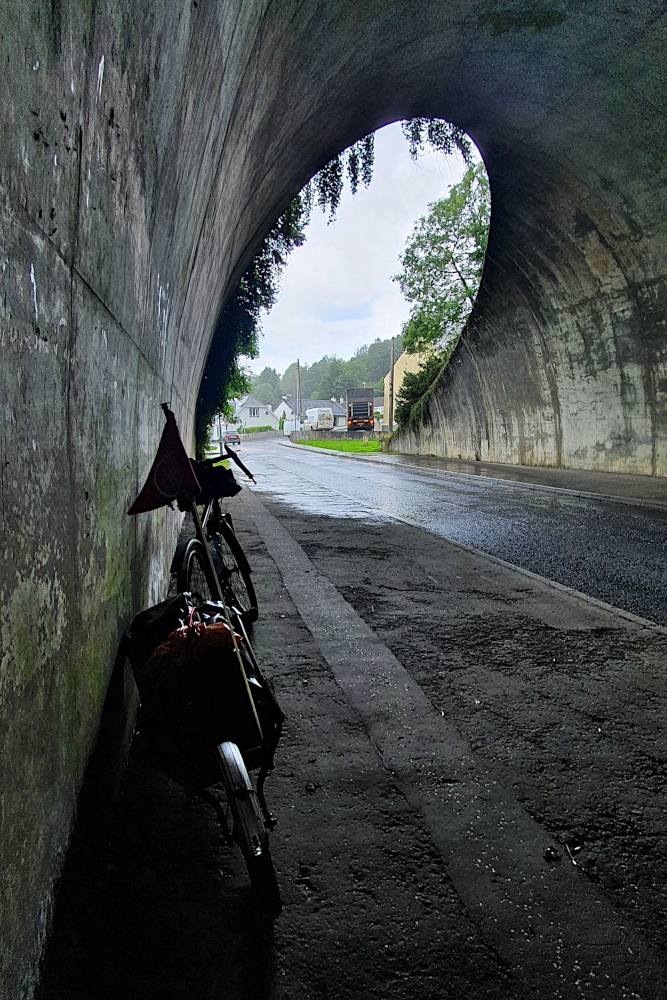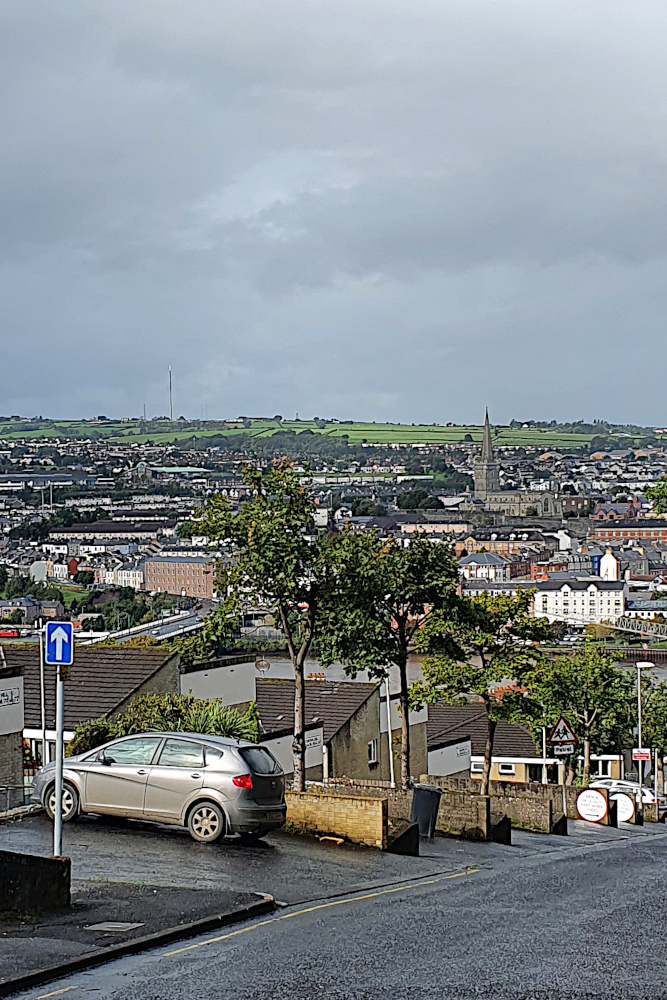Once upon a time (in 2015) I got on a ferry to Northern Ireland with a bike, did a bit of a twiddle around, and then got on a ferry to Cairnryan in Scotland, and headed up the Ayrshire coast. I moaned about headwinds and rain, while marvelling at the beauty of the countryside. I wrote about it here.
Considering I’ve been (mostly) travelling in the opposite direction this time round, and deliberately changed the route where possible, I might have expected a different experience. In fact, it’s been much the same, but with added wise fish and castles.

I was amazingly lucky with the winds around northern Scotland, so I’m not going to whine now that things have returned to normal, and the Atlantic westerlies are sporadically chucking rain in my chops. Besides, the occasional forced route change or dive for cover can throw up the unexpected.
Staring down the barrel of over 110km into the leading edge of a storm on Tuesday, I found the spooky castle above by the simple means of cutting inland by a mile or two rather than plugging straight down the Scottish coast.

And, despite the best efforts of a 30mph headwind, the road along the coast was as beautiful as when I’d followed it in the opposite direction half a decade ago. Though I was struggling to convince myself that only being able to reach 9mph was good, because I had more time to appreciate the scenery.
Wednesday was predicted to be a washout, with rain warnings to add to the strong winds. I decided to spend as much of it as possible hidden in a ship, crossing to the capital of Northern Ireland. My cunning tactics kept me surprisingly dry until a cloudburst just as I approached Belfast’s Big Fish (below) in the city centre. The internet tells me that it’s actually a Salmon of Knowledge. Which means it should really have been able to tell me I was about to need emergency shelter…

I’d never spent any time in Belfast before, so a quick wander around was nice, despite the rain. Like every other city I’ve seen in the UK in the last few weeks, it’s got a ‘ghost town’ feel to the city centre at the moment.
Covid effects aside, it has a slightly different feel to other UK cities (and not just because of the impact of the Troubles on the inner suburbs). To me, the centre feels a little bit American somehow, maybe reflecting the historic links between the island of Ireland and the USA. It also has the habit of juxtaposing old buildings right next to new ones, in a way which would be rare elsewhere in the UK.

By Thursday morning, it was time to head into the countryside. Having taken the decision to skip the lovely, but strenuous, Antrim coast this time (I’d had a good look on my previous trip), I was a bit surprised to find myself at the double bridge below.

I’ve got a very similar, but more cloudy, picture of a touring bike at this bridge from five years back. I’m still not entirely sure how what I thought was a brand new route turned out to be the exact road I’d taken before. But I did soon make sure I was into new territory by turning left at Coleraine.

This took me along the north of Northern Ireland towards the western edge of the UK. More significantly, it was taking me straight towards a fleet of heavy showers, which made yesterday’s (Friday’s) riding, erm, interesting.
With bright sunshine between the showers, and another howling headwind, I spent the day sprinting along soaking roads before diving under cover as another cloudburst hit. Thankfully, with countryside more similar to England than Scotland, there’s usually a little shelter from the wind, and plenty of cover from the rain, including the odd tunnel.

I’m now right up close to the UK’s only land border. Being a set of islands can sometimes make you forget your close links to other countries. It’s unavoidable here, from the mix of British, Irish and Northern Irish registration plates on the cars, to the double name and tumultuous history of Londonderry / Derry (below), one of the hotspots of the Troubles.

My last visit to this region was a long time ago (at least it feels it, being pre-Covid, pre-Brexit, and even pre-finishing the Round the World ride). It’s probably good to remember that the big problems in Northern Ireland have been over for a lot longer than that,despite occasional rumbles. And it’s great that the country is still as beautiful, and the people as friendly, as they were last time.
Now I just need the showers to stop…








